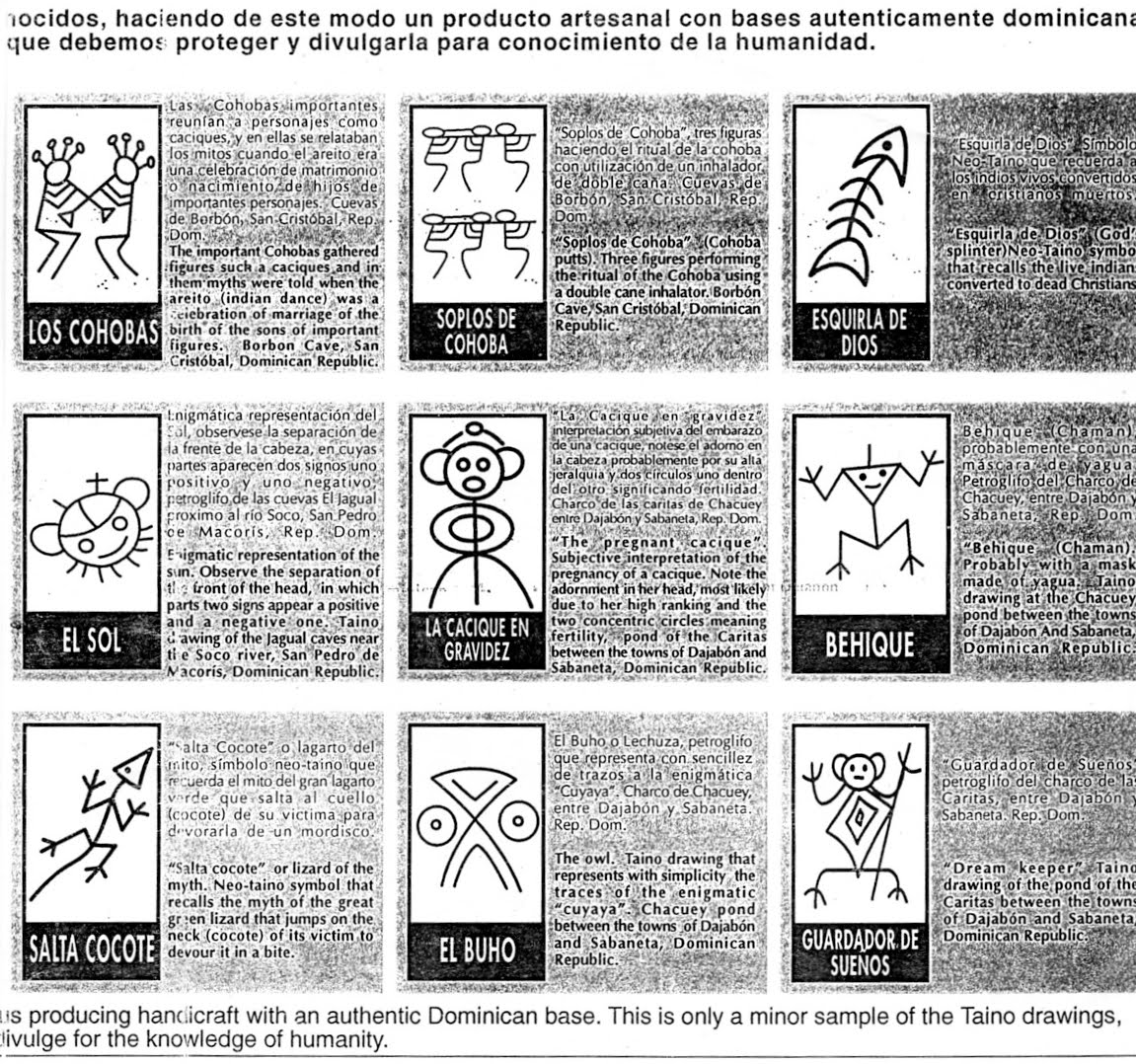Unveiling the Past: Puerto Rican Taino Symbols and Their Meanings
Before the arrival of Christopher Columbus in 1492, Puerto Rico was inhabited by the Taino people, an indigenous group with a rich culture and spiritual beliefs that continue to resonate on the island today. One of the most enduring legacies of the Taino are their symbols, intricate designs imbued with deep meaning and significance.
These symbols, etched into stone, pottery, and even their bodies, served as more than mere decorations. They were powerful expressions of the Taino worldview, reflecting their beliefs about the cosmos, the natural world, and the human condition. Understanding these symbols offers us a unique window into the past, allowing us to connect with the spirit and legacy of the Taino people.
Often found adorning ceremonial objects and cave paintings, these symbols were integral to Taino rituals and beliefs. The sun, with its life-giving energy, was a central motif, often represented as a powerful deity. Similarly, the coquí, a small frog native to Puerto Rico, held deep spiritual significance and was believed to be a messenger between the physical and spiritual realms.
Despite the devastating impact of colonization, which led to the decline of the Taino population and the suppression of their culture, their symbols have endured, passed down through generations and painstakingly preserved in archaeological sites across the island. Today, these symbols are experiencing a resurgence of interest, as Puerto Ricans seek to reconnect with their indigenous heritage and celebrate the resilience of their ancestors.
Exploring these symbols is more than just an academic exercise; it's a journey into the heart of Puerto Rican identity. By understanding the meaning behind these ancient designs, we gain a deeper appreciation for the island's history, culture, and the enduring legacy of the Taino people.
However, it's essential to approach the study of Taino symbols with sensitivity and respect. Due to the loss of written language and the trauma of colonization, much of their knowledge was tragically lost. Contemporary interpretations should be approached with caution, acknowledging the gaps in our understanding and the importance of ongoing research led by Taino descendants.
Taino Symbols: A Window into a Lost World
While numerous symbols populated the Taino belief system, some of the most commonly recognized include:
The Sun (Boinayel)
Often depicted as a radiant circle with a face, the sun represented warmth, light, and life. Boinayel was a powerful deity associated with fertility, growth, and the cycle of life.
The Coquí
This tiny frog, endemic to Puerto Rico, holds profound cultural significance. Believed to embody the spirit of the island, the coquí symbolized good luck, fertility, and protection. Its distinct song, a melodious "co-kee," is a cherished sound associated with the island's soul.
The Cemi
Cemis were sacred objects believed to possess spiritual power and act as intermediaries between the physical and spiritual realms. They were often carved from wood, stone, or bone, taking various forms, including human-like figures, animals, and abstract designs.
The Importance of Preserving Taino Heritage
The resurgence of interest in Taino symbols is not simply a nostalgic trend; it's an essential aspect of cultural revitalization and reclaiming a silenced past. By understanding and appreciating these symbols, we contribute to:
1. Honoring Indigenous Legacy
Recognizing and celebrating Taino symbols acknowledges the presence and contributions of indigenous communities in Puerto Rican history and identity. It serves as a powerful reminder of their resilience and enduring influence on the island's culture.
2. Fostering Cultural Understanding
By exploring the meaning and significance of Taino symbols, we gain a deeper understanding of their worldview, beliefs, and connection to the natural world. This understanding fosters cross-cultural dialogue and appreciation for indigenous perspectives.
3. Promoting Cultural Preservation
The study and appreciation of Taino symbols encourage the preservation of indigenous knowledge and artistic traditions. It inspires future generations to connect with their heritage and safeguard this invaluable cultural legacy.
Recommendations for Further Exploration
For those eager to delve further into the fascinating world of Puerto Rican Taino symbols, several resources offer valuable insights:
- The Smithsonian National Museum of the American Indian: Offers online exhibitions and resources dedicated to Native American art and culture, including information on Taino artifacts and symbolism.
- The Museo de Arte de Puerto Rico: Houses a collection of Taino artifacts and artwork, providing a glimpse into their artistic traditions and cultural practices.
- "The Tainos: Rise and Decline of the People Who Greeted Columbus" by Irving Rouse: A comprehensive academic work exploring the history, culture, and beliefs of the Taino people.
Conclusion: Embracing the Legacy of the Taino
The symbols of the Taino people are more than just ancient designs; they are powerful reminders of a rich cultural heritage that continues to shape Puerto Rican identity. By exploring their meaning and significance, we honor the legacy of the Taino, foster cultural understanding, and contribute to the preservation of their invaluable contributions to the world. As we learn from the past, we gain a deeper appreciation for the present and a greater sense of responsibility for protecting and celebrating the diversity of human culture. Let us continue to explore, learn, and share the stories embedded within these enduring symbols, ensuring that the spirit of the Taino continues to thrive for generations to come.
Florida stair railing code dont trip up
Decoding the rutgers football calendar
Mastering lexus es 350 wheel security the definitive guide to lug nut torque














